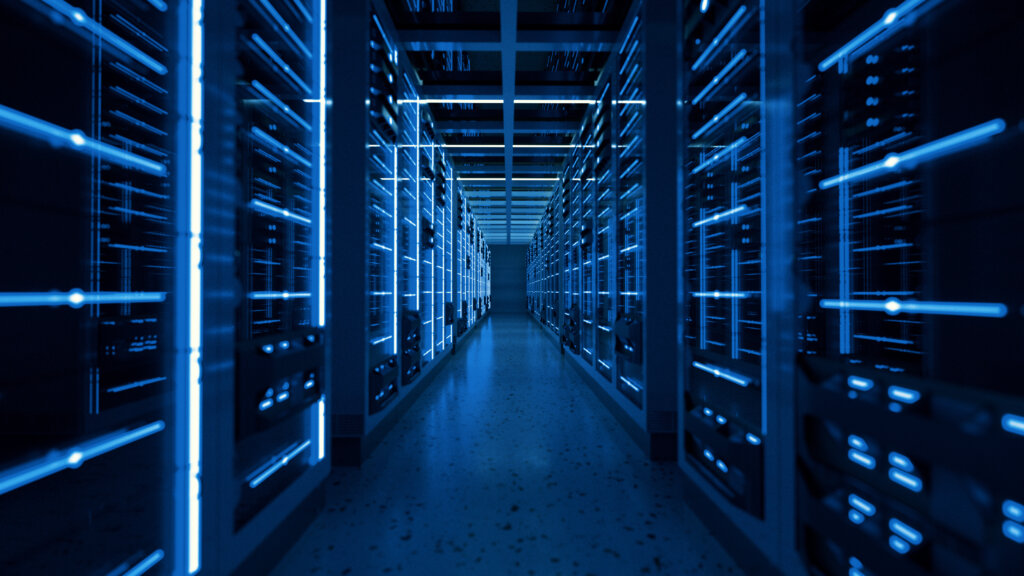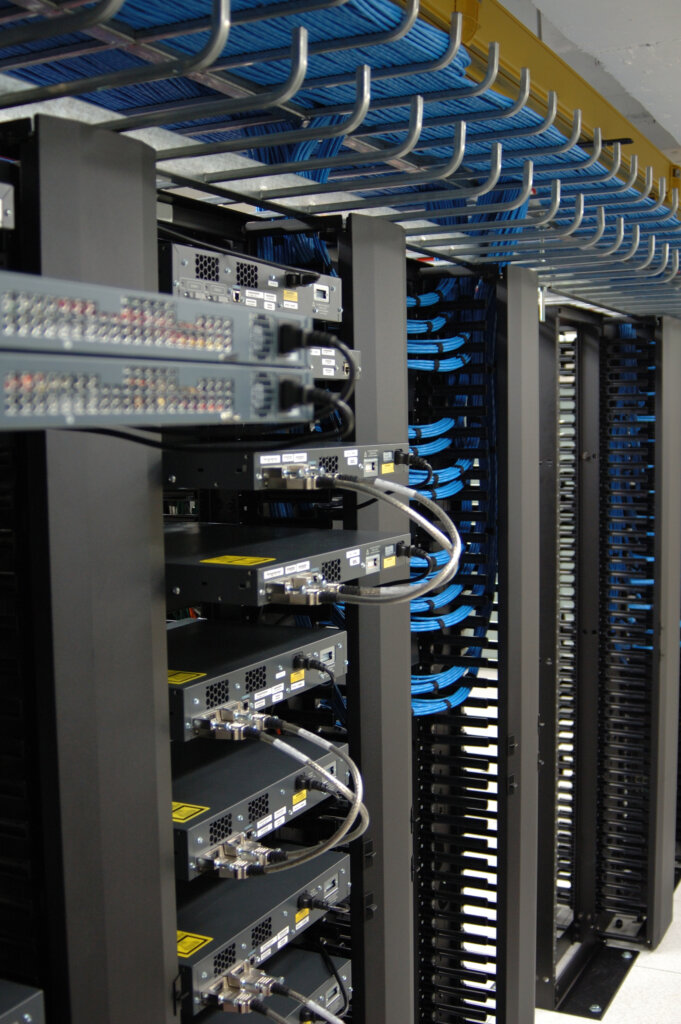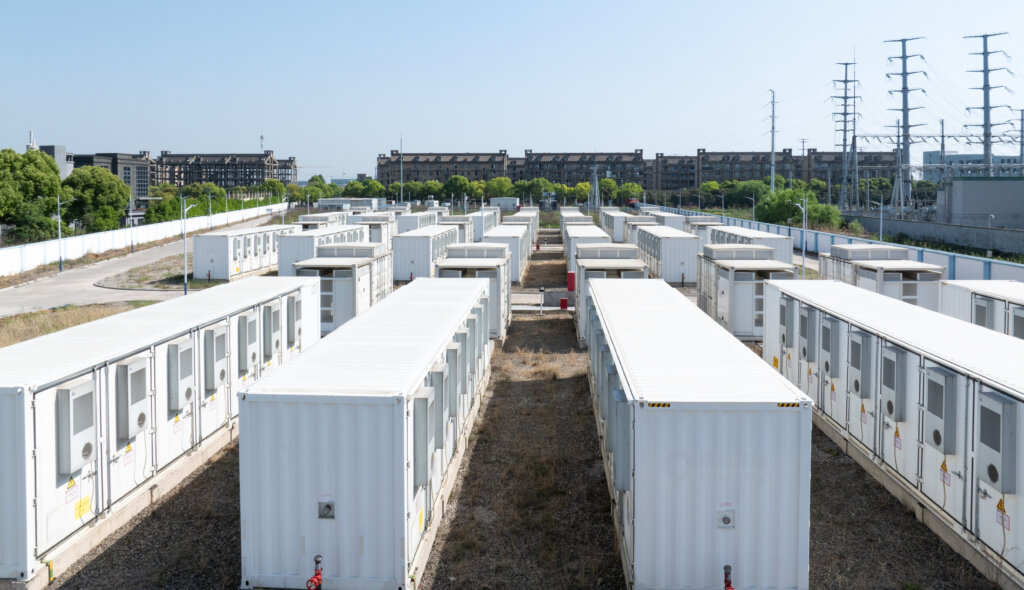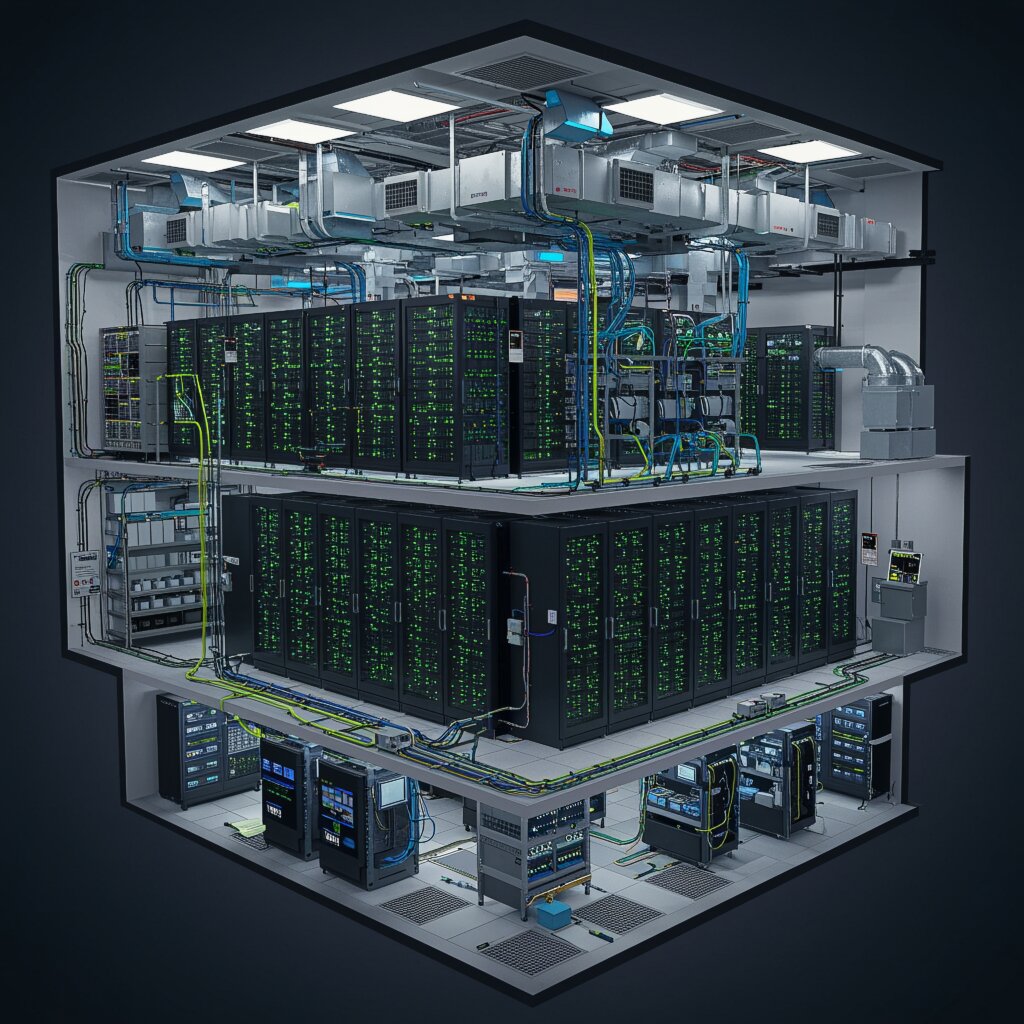Modern data centers rely on sophisticated electrical power systems designed to deliver continuous uptime, manage escalating energy costs, and accommodate future scalability. These systems incorporate advanced components such as uninterruptible power supplies (UPS), redundant power distribution units (PDUs), and intelligent monitoring solutions. By leveraging these technologies, operators can ensure stable voltage regulation, rapid failover during outages, and real-time diagnostics that minimize the risk of downtime. The integration of smart grid connectivity and automated load balancing further enhances the ability to respond dynamically to fluctuating demand and evolving operational requirements.
As data workloads and digital infrastructure continue to grow, operators face increasingly complex challenges in power efficiency, capacity planning, and system resilience. Effective optimization of the data center’s electrical infrastructure involves not only upgrading hardware, but also implementing predictive analytics for energy consumption and maintenance strategies. These measures enable data centers to maximize performance, reduce operational costs, and support sustainable growth. A robust and adaptable electrical power system is essential for maintaining reliability and ensuring that data centers can meet the demands of modern digital enterprises.
This article examines each of five (5) primary electrical power challenges faced by modern data centers:
- Managing Rising Energy Costs
- Maintaining Continuous Uptime
- Enhancing System Resiliency
- Complexities of Capacity Planning
- Current and Future Scalability
A comprehensive approach to electrical power management … one that effectively balances and resolves these challenges … is essential for the sustained success and securing of data center operations.

Example of server racks in a data center.

The resolution of these electrical power challenges must always be accompanied by a steadfast commitment to robust safety protocols, which are essential to the protection of both data center personnel and the critical operational infrastructure.
Managing Rising Energy Costs
Energy consumption constitutes one of the largest operational expenditures in any data center power system, making efficiency a top priority for facility managers. As computing density and power requirements escalate due to the proliferation of high-performance servers and storage devices, optimizing data center energy efficiency becomes increasingly critical. Deploying high-efficiency uninterruptible power supplies (UPS) and intelligent power distribution units (PDUs) reduces conversion losses and enhances the reliability of power delivery. Continuous energy monitoring, enabled by advanced metering infrastructure, provides granular visibility into real-time consumption patterns, allowing operators to identify inefficiencies and implement corrective actions. Power factor correction devices and automated load balancing systems further minimize reactive power losses and distribute electrical loads evenly, preventing localized overheating and maximizing the lifespan of critical components. Analytics-driven controls integrated at the circuit level, enable dynamic adjustments that optimize energy usage based on fluctuating IT demands.
Cooling remains a dominant factor in data center electrical infrastructure design, often accounting for as much as 40% of a data center’s total annual power consumption.1 Advanced cooling strategies, such as “hot aisle” / “cold aisle” containment, liquid cooling, and economizer systems, are engineered to align HVAC performance precisely with IT load requirements. Real-time monitoring of temperature, humidity, and airflow enables adaptive control of cooling resources, ensuring optimal thermal conditions while minimizing energy waste. Additionally, the integration of environmental sensors into centralized power management platforms allows for predictive maintenance and rapid response to anomalies, reducing the risk of thermal events and unplanned downtime. These technologies collectively improve overall energy efficiency, lower operational costs, and support higher rack densities without compromising equipment reliability.
Sustainability initiatives are increasingly shaping data center power strategies as operators seek to reduce environmental impact and comply with regulatory requirements. The integration of renewable energy sources (e.g., on-site solar arrays, fuel cells, and wind turbines) into the electrical infrastructure diversifies energy supply and reduces dependence on traditional grid power. Hybrid energy architectures, which combine utility power with on-site generation and energy storage systems, provide greater resilience against outages and enable participation in demand response programs. These approaches not only lower long-term operational costs but also help data centers achieve ambitious carbon reduction targets. By adopting sustainable power solutions without sacrificing reliability or performance, operators position their facilities for long-term success in an evolving digital landscape.
Maintaining Continuous Uptime
Uninterrupted operation is a fundamental measure of credibility and operational performance in modern data centers. Even brief power interruptions can trigger cascading equipment failures, data corruption, and significant financial losses due to downtime and service disruptions. To mitigate these risks, facilities deploy redundant data center power systems that incorporate automatic transfer switches (ATS) for rapid source switching, uninterruptible power supplies (UPS) for instantaneous backup, and fault-tolerant switchgear to isolate faults and maintain power continuity. These systems are engineered to deliver seamless transitions between utility and backup power sources, ensuring that critical IT infrastructure receives stable, conditioned power regardless of external disturbances or grid instability.

Example of dual-corded servers with redundant power distribution paths.
Advanced real-time power monitoring further enhances system reliability by continuously tracking electrical parameters such as voltage, current, frequency, and power quality. These monitoring platforms can detect voltage imbalances, phase loss, overloads, and abnormal consumption patterns, enabling operators to proactively address issues before they escalate into failures. Tiered redundancy architectures, including N+1, 2N, and 2(N+1) configurations, provide multiple layers of backup capacity, allowing for scheduled maintenance or component replacement without impacting system availability. Such designs are integral to high-availability data center electrical infrastructure, supporting stringent service level agreements (SLAs) and minimizing the risk of unplanned outages.
Preventive maintenance is equally critical in sustaining continuous uptime. Routine testing and inspection of generators, UPS units, switchgear, and load banks verify the operational readiness of backup systems and ensure compliance with industry standards such as ANSI / TIA-942, as well as compliance with guidelines and Tier Certification by the Uptime Institute.2 Automated testing and diagnostics integrated through centralized monitoring and management platforms, streamline maintenance workflows and provide real-time alerts for any detected anomalies. This approach reduces human error, shortens response times, and significantly lowers the likelihood of unexpected failures, thereby safeguarding uninterrupted operation across all mission-critical systems.

Ensuring 24/7/365 operation in modern data centers depends on robust power system redundancy, advanced monitoring, and proactive maintenance, all of which must be supported by strict life safety measures to protect personnel working with high-voltage electrical infrastructure.
Enhancing System Resiliency
Electrical resiliency is a defining characteristic of a data center’s ability to sustain operations amid grid instability, electrical faults, or external disruptions such as severe weather or utility outages. Achieving high levels of resiliency in data center electrical systems requires the implementation of robust fault isolation techniques, such as selective coordination of circuit breakers and advanced protective relays, to quickly identify and contain faults without impacting unaffected areas. Redundant pathways for power distribution, including dual-corded equipment and parallel switchgear, ensure that alternate routes are available if a primary path fails. Modular power architectures, featuring independent power modules and segmented busways, allow isolated failures to be contained and serviced without necessitating a full-system shutdown … thereby maintaining the continuity of core IT services even under adverse conditions.
The integration of Distributed Energy Resources (DERs), such as on-site microgrids, Battery Energy Storage Systems (BESS), and renewable generation assets, significantly enhances data center resiliency. These DERs provide immediate backup power during utility outages, support seamless transitions between power sources, and help stabilize voltage and frequency during transient events. Advanced energy management systems coordinate the operation of DERs with traditional backup generators, optimizing the dispatch of stored energy and renewable resources to maintain critical load support. Dynamic load shedding strategies enabled by automated control systems, prioritize essential systems and shed non-critical loads in real time … thus ensuring that mission-critical operations continue uninterrupted during periods of constrained power supply.

Example of Onsite Battery Energy Storage with Private Transmission Lines
An additional challenge related to enhancing system resiliency in data centers is that of managing the massive and growing power demands driven by data processing and AI. To address this, many data centers are turning to onsite renewable power generation and microgrids; thus creating integrated energy systems that enhance grid independence and resiliency. This approach not only supports continuous, reliable operations but also helps mitigate grid constraints, meet decarbonization goals, and reduce the high cost of power.
Intelligent control platforms further reinforce electrical resiliency by enabling real-time monitoring, diagnostics, and autonomous response capabilities. Supervisory Control and Data Acquisition (SCADA) systems that are integrated with AI-driven predictive analytics continuously analyze electrical parameters and environmental conditions to detect emerging faults or performance anomalies. These systems can initiate automated recovery actions, such as reconfiguring power flows or isolating compromised components, with minimal human intervention. By leveraging data-driven insights and machine learning algorithms, operators can anticipate potential issues, optimize maintenance schedules, and enhance both the reliability and responsiveness of the data center power infrastructure … which therefore ensures robust performance in the face of unpredictable events.
Complexities of Capacity Planning
Strategic capacity planning is essential for ensuring that a data center’s electrical infrastructure can accommodate future expansion while avoiding unnecessary capital expenditures and minimizing the risk of downtime. This process involves detailed forecasting of IT load growth, trends in virtualization, high-density computing, and evolving application requirements. Continuous evaluation of redundancy needs (e.g., such N+1, 2N, or 2(N+1) configurations) should be compared with and contrasted against facility constraints (e.g., available floor space, cooling capacity, and utility service limits). Advanced smart metering systems and granular power usage analytics deliver real-time visibility into load profiles. Such visibility enables operators to identify peak demand periods, forecast future requirements accurately, and optimize electrical capacity allocations for both current and anticipated workloads.
Adopting modular power distribution solutions such as scalable busways, plug-and-play power panels, and configurable power distribution units (PDUs), provides the flexibility needed for incremental growth without extensive infrastructure overhauls. By designing electrical systems with adaptability and scalability in mind, data centers can seamlessly integrate new racks, servers, or storage devices while maintaining optimal efficiency and system reliability. Dynamic load management systems, automated controls, and real-time monitoring all ensure that power is distributed evenly across circuits and phases. This practice prevents localized overloads and enables the smooth integration of additional equipment as operational demands evolve.
Additionally, the compliance with efficiency standards and regulatory requirements has become an increasingly important aspect of data center capacity planning. Adherence to energy codes, sustainability benchmarks such as LEED or ENERGY STAR, and operational certifications like Uptime Institute’s “Tier Classification System”3 necessitates precise documentation, rigorous commissioning processes, and the implementation of efficient design practices. Effective coordination among design, operations, and procurement teams is vital to ensure that infrastructure expansions align with both technical specifications and regulatory mandates. This collaborative approach not only supports long-term operational goals but also positions the data center to meet evolving industry standards and stakeholder expectations.
Current and Future Scalability
Current and future scalability is a critical attribute of a data center power system, enabling the facility to adapt to increasing workloads, the adoption of emerging technologies, and ongoing business expansion. Modular and prefabricated electrical components (e.g., scalable uninterruptible power supply (UPS) systems, modular switchgear assemblies, and pre-engineered power distribution units) offer flexible deployment options that significantly reduce both installation time and capital expenditure. These modular systems are designed for rapid expansion, allowing operators to quickly make provisions for additional power capacity to support new server clusters, high-density racks, or edge computing installations without disrupting existing operations or requiring extensive retrofits.

Example cross-section view of a large data center with multiple rows of server racks, well-lit aisleways for technicians, overhead cooling systems, raised flooring with cable pathways, power distribution units, and three phase UPS’s.
The foundation of electrical scalability lies in a well-engineered distribution architecture that anticipates future growth. This includes the use of flexible busway systems, appropriately sized feeders, and substations designed with spare capacity and expansion provisions. Such infrastructure allows for the seamless addition of new circuits and equipment as demand increases, eliminating the need for major reconfiguration or downtime. Integration with Data Center Infrastructure Management (DCIM) platforms provides comprehensive, real-time visibility into power usage, available capacity, and infrastructure health. These platforms enable predictive planning, facilitate efficient resource allocation, and support data-driven decision-making to optimize the deployment of electrical resources across the data center.
A scalable power design also contributes to sustainability and operational efficiency. By enabling incremental growth that aligns with the adoption of energy-efficient technologies like high-efficiency transformers, variable frequency drives, and advanced cooling systems, data centers can minimize energy waste and reduce their environmental footprint. This modular approach allows for capacity expansion in precise increments, ensuring that power and cooling resources are matched to actual demand … which in turn reduces operational disruptions and supports continuous uptime. Ultimately, scalable electrical infrastructure empowers data centers to maintain high performance and reliability while achieving long-term sustainability and business objectives.
Conclusion: Trystar’s Role In Advancing Data Center Power Resiliency
Trystar delivers engineered data center power solutions designed to strengthen reliability, efficiency, and scalability across critical operations. Each solution is engineered for integration within modern data center electrical infrastructures, combining safety, monitoring, and control to ensure dependable performance.
With deep expertise in emergency power and electrical resiliency, Trystar supports data centers through every phase of operation, from maintenance and expansion to emergency restoration. Whether providing temporary power during upgrades or ensuring continuous uptime during utility interruptions, Trystar’s data center power systems deliver the dependability and flexibility that operators and managers demand.

Specifying Trystar means partnering with a provider committed to delivering robust, customized electrical power resiliency solutions that protect both critical infrastructure and the physical safety of data center personnel.
Contact Trystar for your next data center project to ensure reliable, scalable, and safe power solutions that meet the industry’s most demanding challenges.
_____________________________________
References:
1 National Renewable Energy Laboratory (NREL), a national laboratory of the U.S. Department of Energy, Office of Energy Efficiency and Renewable Energy. “Reducing Data Center Peak Cooling Demand and Energy Costs With Underground Thermal Energy Storage”, January 17, 2025.
https://www.nrel.gov/news/detail/program/2025/reducing-data-center-peak-cooling-demand-and-energy-costs-with-underground-thermal-energy-storage
2 The Uptime Institute is a global authority on data center reliability and sustainability.
https://uptimeinstitute.com/
3 The Uptime Institute’s “Tier Classification System” has been the international standard for data center performance for over 25 years.
https://uptimeinstitute.com/tiers